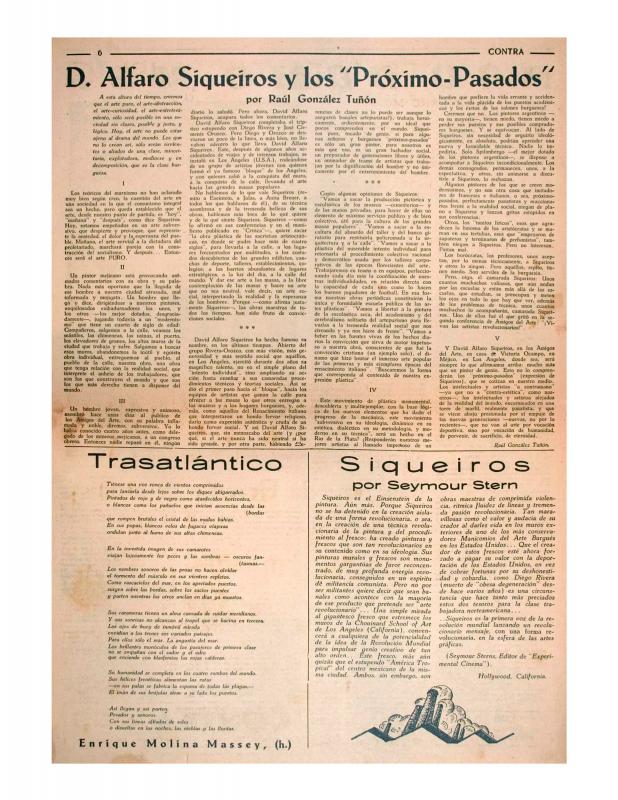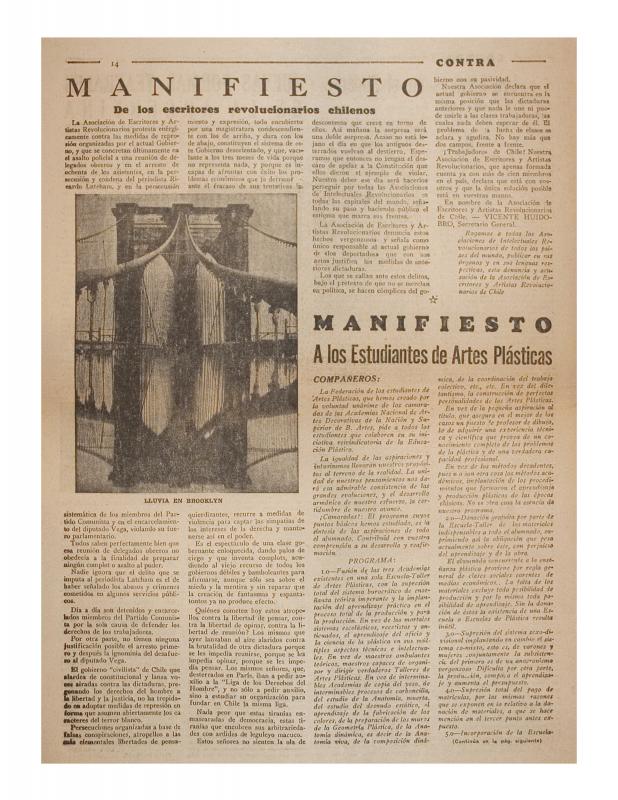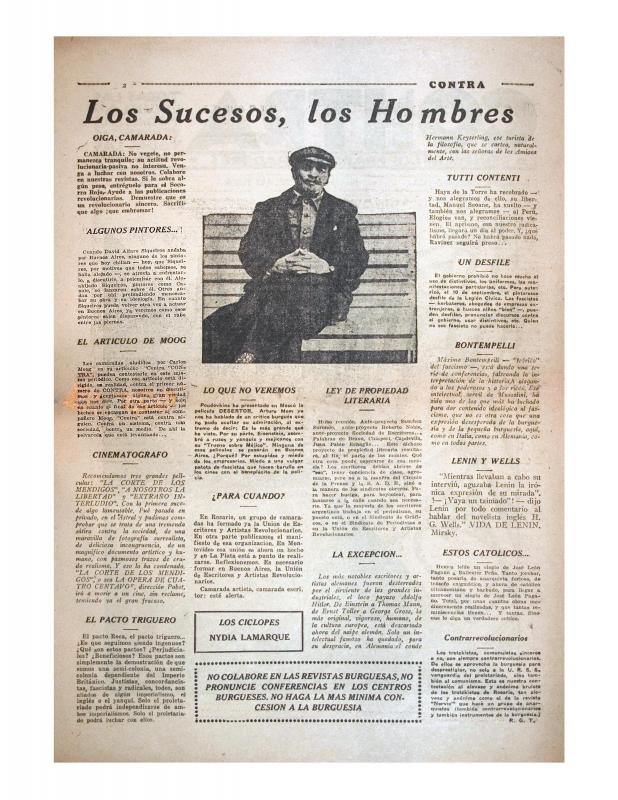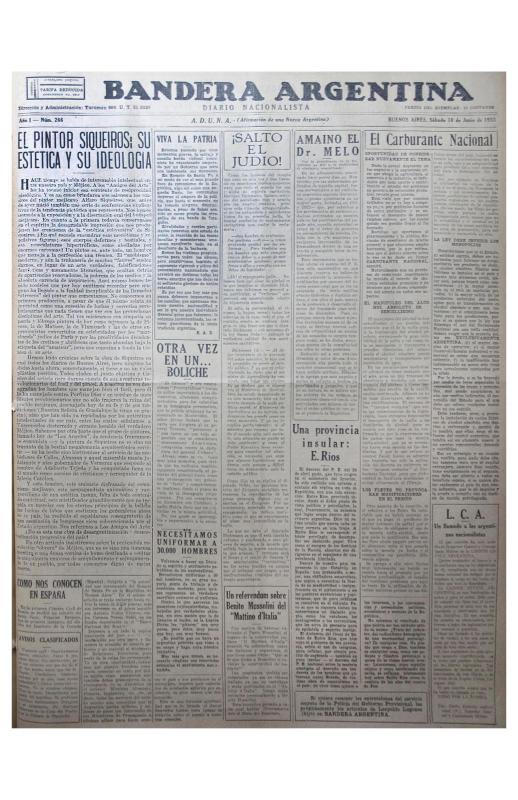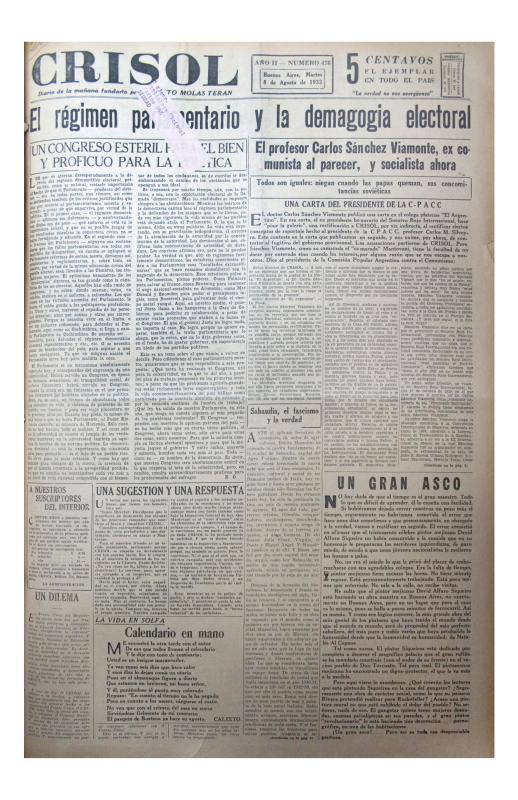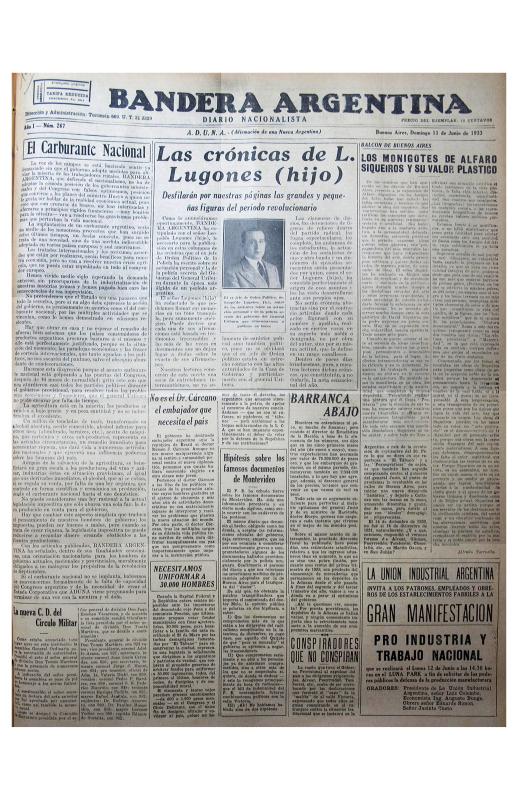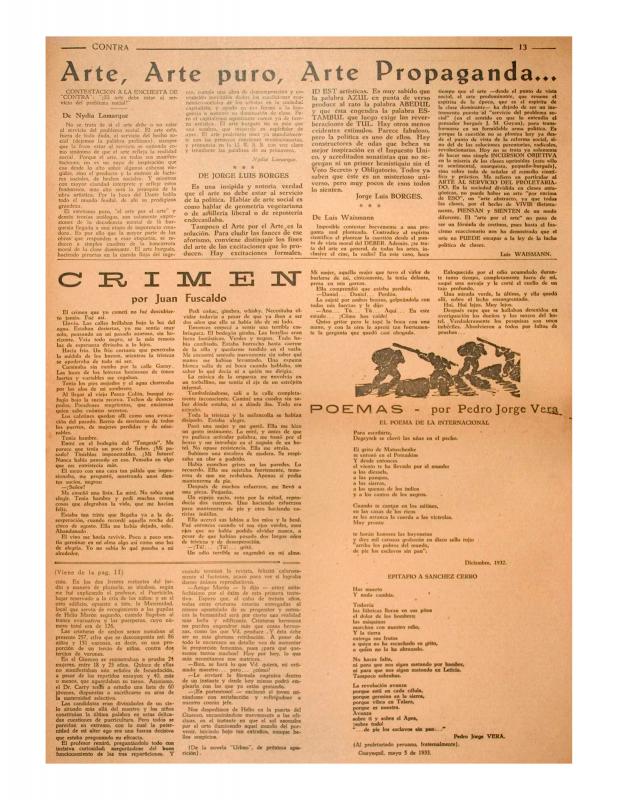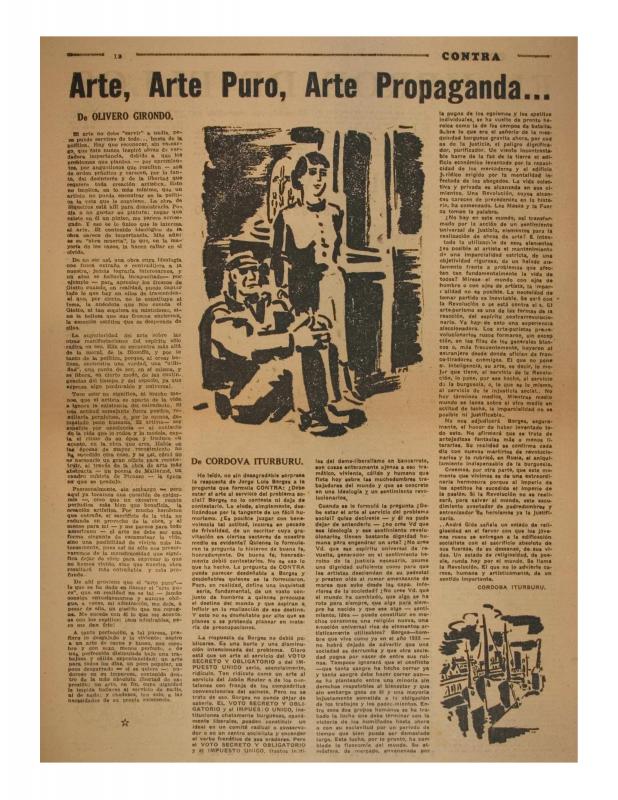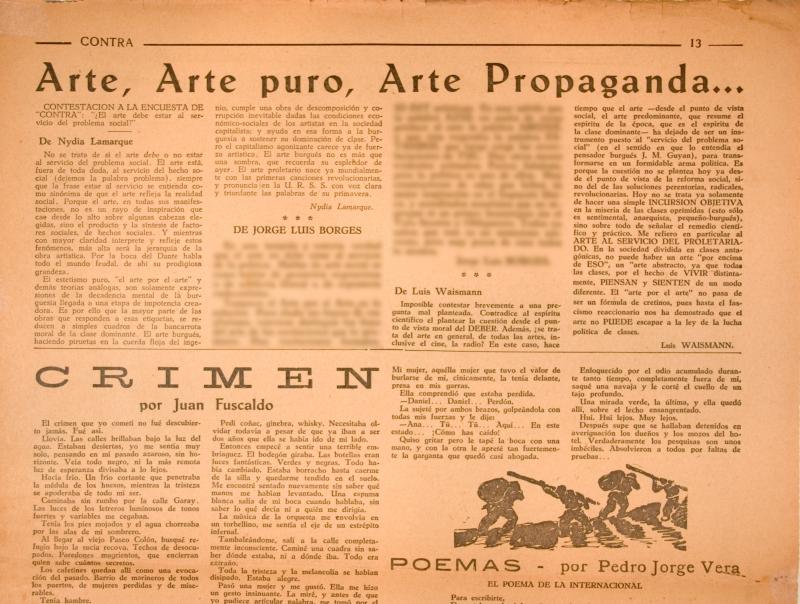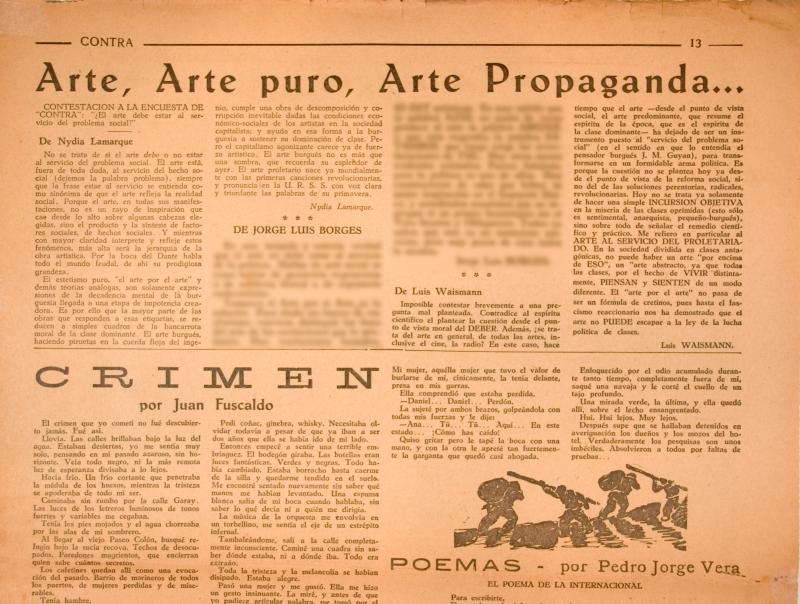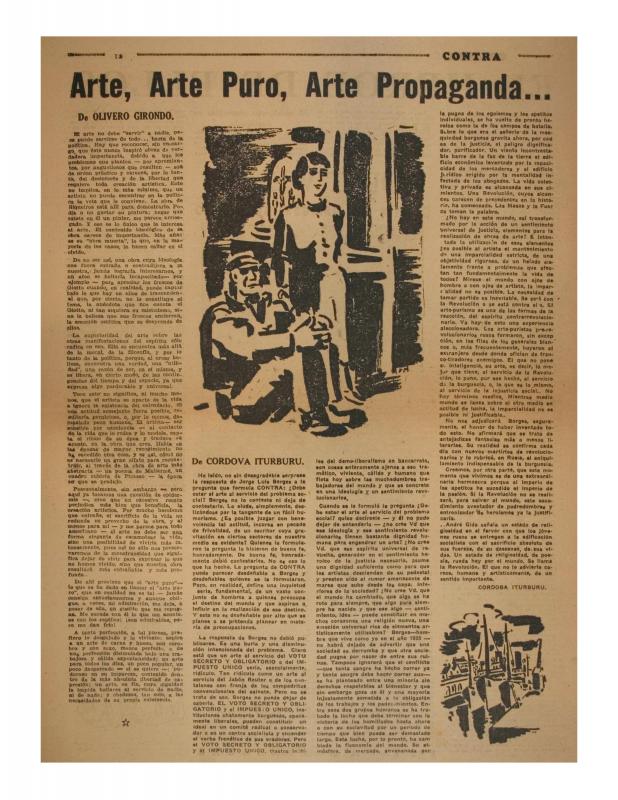Having been expelled from the United States, David Alfaro Siqueiros (1896–1974) traveled to Montevideo in February of 1933, and by the end of May in that same year, he had established himself in Buenos Aires. In the River Plate, Siqueiros experimented with technique and presented arguments based on the contents of his lecture Los vehículos de la pintura dialéctico-subversiva [The Vehicles of Dialectical-Subversive Painting], which he had developed while in the United States. In June he exhibited at Amigos del Arte [Friends of Art], a liberal and modernizing arts institution. Siqueiros gave controversial lectures that polarized the arts field into the defenders of “arte puro” [“pure art”] and “arte político” [“political art”]. He was supported by Contra. La revista de los francotiradores [Against: The Snipers’ Magazine], run by leftist writer Raúl González Tuñón [see documents 733230, 733314, and 733270, among others]. He collaborated on the newspaper Crítica [Critique], edited by Natalio Botana. Botana commissioned Siqueiros to paint a mural in the cellar of his house, Quinta Los Granados, in Don Torcuato, in the Province of Buenos Aires. The Equipo Poligráfico Ejecutor [Lead Polygraphic Team]—formed by Siqueiros, Antonio Berni (1905–1981), Lino Enea Spilimbergo (1896–1964), Juan Carlos Castagnino (1908–1972), and the Uruguyan set-designer Enrique Lázaro—created Ejericio Plástico [Visual Exercise], with distorted nudes over the curved surface of the vaulted ceiling, by means of photographic projection. It was conceived as a fresco on cement, using such technical innovations as application by mechanical tools and the use of industrial silicates. In December 1933, sketches and photographs of the mural were exhibited in the magazine Signo [Sign] premises. Currently the work is in storage due to litigation; damage may affect its conservation. During the period, Argentinean right-wingers strongly attacked the Mexican Communist painter in its publications Bandera Argentina [Argentinean Flag] and Crisol [Melting pot], which were representative of the Catholic nationalism that had gained momentum since the 1930 military coup [see documents 733206, 734050, and 733182, among others]. This document is part of a group of articles published in Contra. La revista de los francotiradores [Against: The Snipers’ Magazine]; the publication was run in accordance with the cultural directives of the Communist Party by poet Raúl González Tuñón, [who was] not officially affiliated with the party. As such, Contra functioned as a leftist publication that stimulated the militant debate in both the literary and political avant-gardes. The magazine was published between April and September of 1933, approximately the months that Siqueiros spent in Buenos Aires, whose presence was central to the publication. The majority of its collaborators had worked on Crítica. This document is part of a subgroup of documents regarding the survey “Should art serve social problems?” published in the magazine Contra. This document relates the editorial position of the magazine. Luis Waismann, Jorge Luis Borges, Nydia Lamarque, Oliverio Girondo, and Cayetano Córdova Iturburu responded to the survey. [See documents 730253, 730272, 730263, 733529, and 763591]

